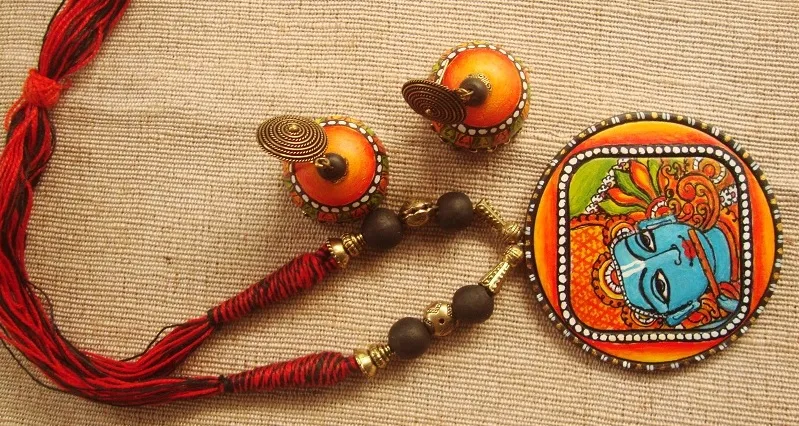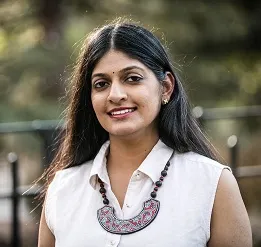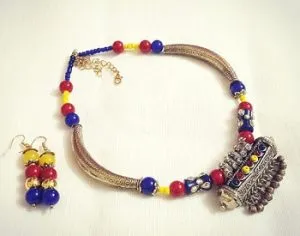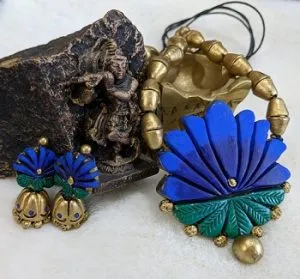Friends go on a Goa trip, bring back e-commerce for rural artisans: story of Festivya
Launched in May 2016, this online platform for artisan jewellery has already expanded its operations to US, Asia, and Europe too.

In 2001, when Akash, Sid, and Sameer went to Goa, Dil Chahta Hai spoke to a whole new audience about friendship, love, and liberation. Fifteen years later, three friends went to Goa on a backpacking trip — their story was not just about friendship, but also about the coming together for an entrepreneurial venture aiming to uplift underpaid artisans in the country.
Back in their college days in Bengaluru, Suresh, Rahul and Matthew often brainstormed ideas and debated which ones could be viable. During that trip to Goa in 2015, an idea finally struck when they happened to see some flea markets and handicraft shops.
“We saw that the price was highly marked-up at various galleries, while it seemed that the original artisan was grossly underpaid. We thought of a simple platform that would let artisans showcase their products, while we manage the sales, fulfillment, SEO, marketing, etc., thereby facilitating the sale of their products for a fair price,” Suresh Radhakrishnan Nair (32) recollects. The three were joined by their friend Nickey Joseph, who had prior experience in Indian e-commerce.
The team wanted a name that portrayed the joy, colours and spirit of India, as manifested by its many festivals and celebrations. Festivya — a play on the word festival, as in festival of fashion – was registered in February 2016. The company started operations in May 2016 with just one merchant and 20 products.

Non-precious jewellery market, although unorganised, is a fast-growing one in India. Suresh believes that it is also one of the most creative segments where an artisan puts their heart and soul into their work but rarely gets recognised or rewarded.
In the first month, Festivya sold just four products, and generated Rs 5,000 revenue. Flash forward to November 2017, Festivya sells almost 200 pieces of jewellery in a month, with an average order size of about Rs 1,500.
The gang of four
Suresh runs his own consulting venture in New York, and both Mathew Abraham Roy (30) and Rahul R.S. (29) are based in Kuwait.
It is not easy for four co-founders to be working from different parts of the world; Festivya’s Indian team is based out of Bengaluru and Ahmedabad where Nickey, the Director of India Operations, works. He handles the daily operations of Festivya, right from customer support, to ensuring the orders are dispatched on time.
Suresh had experience in driving strategy and sales for MNCs in India before he moved to New York to set up his own consulting venture. Suresh now manages Festivya full time, driving business development, growth, and strategy as the CEO. Suresh Rahul travels to India every four to five months from New York where he focuses on scaling Festivya to the US market.
As CFO, Mathew’s location doesn’t matter. With expertise in tech and business, COO Rahul manages operations and specialises in logistics, vendor selection, tie-ups and collaborations in both India and abroad.

The CPO, Janani SriGuha, is Suresh’s wife who joined the board when Festivya needed technical innovation and marketing expertise to take it the next level.
An engineer with an MCA from NITK, she had worked with a few startups in India before moving to New York to be part of Birchbox, a global pioneer in fashion ecommerce. She drives product and digital marketing for Festivya, and the design team based in India reports to her.
A lean team of nine, they communicate daily through calls, WhatsApp, Slack, and Skype. “Since we are all experienced in the Indian business environment, we already thought about foreseeable problems and have come up with solutions too,” says Suresh.
Getting down to business

The initial cost to set up Festivya came to Rs 20 lakh which the co-founders were able to put in. “Leveraging our in-house expertise, we felt it made more sense to start out without external interference and concentrate on proving our business model to be a sustainable one,” Suresh says.
Festivya targets working women from metro cities, in the 25-45 age group, keen on expressing their individuality and appreciates handmade jewellery, and has high disposable income.
Festivya sources the products from artisans across India including the states of Tamil Nadu, Kerala, Rajasthan, Karnataka, West Bengal, Orissa, Maharashtra, and Delhi. Suresh explains, “We have made a seamless platform that allows a designer to upload their product pictures and details, and our team works on SEO and content before we make it live. We also work along with NGOs to reach out to artisans who are remotely located.”
Tackling the many hurdles of starting up
At the beginning, one of their biggest challenges was logistics. Festivya was partnering with artisans based out of different parts of India, and many of them are located in small towns or villages. This resulted in delays in pick-up and delivery.
“After a few trials with various logistic partners, we have been able to set up top-notch logistics arrangements with third parties, who are both timely and reliable,” says Suresh.

Despite the troubles of working from remote locations, Suresh says that the team stays efficient by demarcating each person’s responsibilities clearly. The team also has a bi-weekly all-hands meeting to ensure free-flow of information across the board.
Building an effective social media strategy was another big challenge. “It took a few months of trial and error to figure out the ideal target audience and grow our social media presence. Recently we celebrated 10,000 likes on Facebook,” Suresh says.
Being a brand which supports local artisans, Festivya’s marketing strategies are designed to identify customers who appreciate Indian handmade jewellery. Their prime strategy is to create awareness about the artisans, designers, and studios which are their merchant partners. “Other than having a strong presence on Instagram, Facebook, and Pinterest, we also have a blog on our website which covers the latest trends in the market and provides fashion tips to customers,” Suresh adds.
People maketh the business
Festivya has 35 merchants on board selling close to 3,000 products. Suresh says that about 40 percent reached out to them and the rest vice versa.
“We handpick the artisans that we associate with, many of whom we follow for a specified period of time to understand their vision and run a viability study to see if they are in line with our vision,” he adds.
Offline too, Festivya has tied up with lifestyle brands to promote their products. According to Suresh, joint ventures have helped them reach out to a larger audience. They also collaborate with lifestyle bloggers and fashion influencers.

Big leaps ahead
Although expanding into international markets on a bootstrapped model is hard, Festivya started international shipping in November. Suresh recounts, “Buying patterns are tied to the culture of the country, and to be able to market well, we need to understand that in depth. Yet, the leap into international markets has given us tremendous hope in bringing Indian artisans and their products to a global audience,” he says.
The team has now managed to build flawless logistics support to US, Europe, and Asian markets, and has already delivered in six countries, mostly to the Indian diaspora. “We have planned a marketing campaign for the US and Europe in 2018, while simultaneously growing the India division,” says Suresh. They plan to open a few pop-up stores, although solid retail stores are not in the books.
Festivya aims to partner with 100 artisans, and achieve 500 domestic sales per month for the first quarter in the coming year, hoping to be profitable in six to eight months. It is also trying to get some US brands to promote its jewellery, besides reaching out to NRIs and yoga studios to curate a niche segment of audience.
Festivya makes 25-30 percent margin for each sale, and has around 2,500 registered customers now. It also has a CSR goal to promote Indian tribal jewellery sourced directly from indigenous tribes from various parts of India. The brand has partnered with Mumbai-based NGO Nanhi Kali which supports the education of underprivileged girls.
What began as an idea during a leisure trip has thus come to change the path of not just four friends but also the livelihood of Indian artisans.







